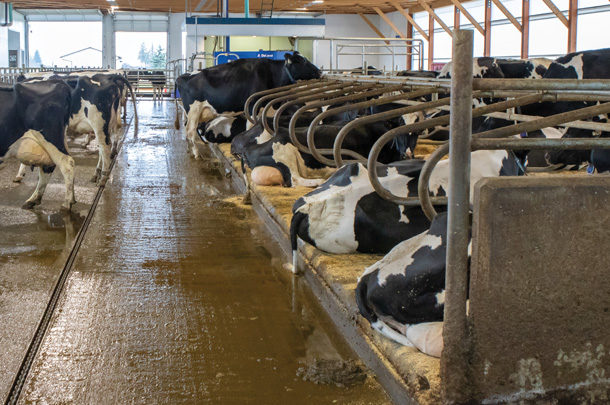Just like thumbprints, no two robotic milking startups are exactly the same. If the technology is the same from farm to farm, then why are there differences?
Typically, robotic startups vary because people are very different in their preparation and expectations.
There are several factors affecting startups, but in this article I will review what you can do in the months and weeks ahead to prepare your robotic dairy for a smooth start.
Communication is key
It is very important to communicate in a way everyone involved in your robotic project understands. What are the expectations for startup, and what role will each person play in helping you achieve those expectations? Your equipment dealer should provide detailed guidance, including a document with a narrative and several checklists, to guide you in the preparations.
For the startup, I recommend having one point person on the farm for managing the general contractor, the equipment dealers and those in charge of the cattle. On large farms, different people on the farm will need to be a part of the conversation at different times. For smaller farms, the point person on the farm will be involved in every aspect.
Meet often
Startup includes building, mechanical and animal preparation. Early on in the process, monthly meetings should take place and, once ground has been broken, bi-weekly and then weekly meetings. As the facility building or retrofit construction evolves, you will engage with different tradespeople and equipment companies. Delays are common, and weather can be the biggest influencing factor. This is especially true if you are expecting to start in warmer weather and the date moves to when it is colder. Be sure to talk through the potential scenarios for delay and have a back-up plan, or two.
Standard operating procedures (SOPs) are common today on successful dairy farms. These are protocols which describe how the work is to be done. During these meetings, SOP topics should be introduced to compare what is happening at the conventional dairy now and how it will change when moving into the robotic facility.
Prepare your herd and your people
From the moment the farm is considering automation, breeding for a cow that will take care of herself in a robot barn should be a top priority. Breed for cows that have strong feet and legs and a drive for dry matter intake (DMI); avoid reverse-tilt rear udders and teat placement that creates cross teats.
In the months leading up to the startup, examine your herd by scoring udders, teat placement and feet and legs. Some farms choose to try every cow in the robot; other farms will be more selective.
Do not forget your people. It will be a combination of before and after training in the robotic barn that will lead to success. Work with the team at your dealership to discuss what is best for introducing information and knowledge to your team. Options include watching videos, reading material and visiting robot barns to learn how they changed the way in which they worked compared to the conventional barn. The basics for successful dairy farming must remain. We must never forget to incorporate routines in the barn to keep our eyes on the animals. Technology and data are to add to, but never replace, “eyes in the barn.”
Go with the (right) ‘flow’
In the parlor, all cows are milked two or three times a day. Regardless of the cow’s health, lameness or personality, she is brought to the milking equipment. When you begin the robot barn, you will train cows and expect them to milk, drink, eat and rest on their own schedule. Training heifers is critical. Facility design is important in facilitating the ease of walking around the barn – or “flowing” – to eat, milk, drink, rest and start it all over.
Regardless of barn type or cow traffic system, the basics of facility design remain the same. Be conscious of how “shortcuts” – like reduced space per cow, lack of water troughs or not enough space per cow, and too few cow-cooling solutions for warmer months – may affect your daily routines and the cows’ ease of walking around the barn. This will influence your results and usually lead to challenges in meeting your expectations.
Dial in nutrition
Forages are a key to success on any farm, but they are critical in getting cows moving around the barn and driving DMI to support milk production. Review your current nutrition on the farm and work with your feed adviser to prepare for the nutritional change to robots. The partial mixed ration (PMR) is as important as the feed in the robot. While the equipment dealer will set up the robot to feed, the feed adviser is responsible for determining the appropriate ration available in the robot.
At the end of the day, communication is key throughout the startup phase. Your employees, your consultants and the companies you are working with need to know your expectations – and especially if they change. The technicians and advisers have the experience of working with robotic systems, but we are here to support the robotic startup you desire.







